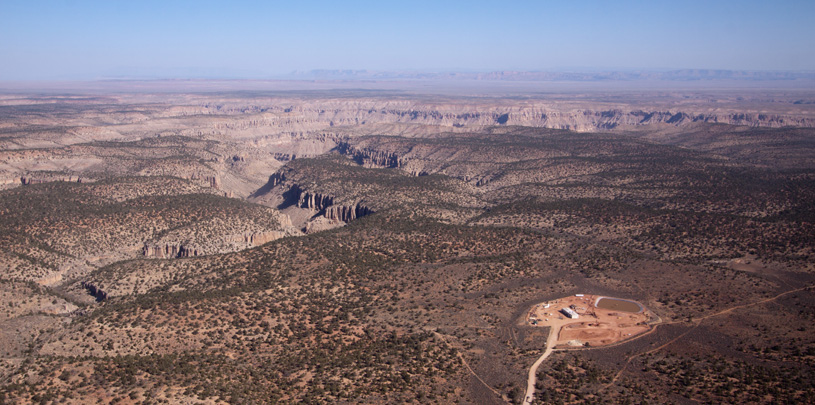
The Havasupai Tribe and conservation groups including the Grand Canyon Trust won a major victory in the legal battle to protect the Grand Canyon watershed last week when a federal judge in Phoenix upheld the U.S. Department of the Interior’s (DOI) 20-year ban on new uranium mining claims across one million acres of public lands adjacent to Grand Canyon. The ban, which expires in 2032, had been challenged by private uranium prospectors and the uranium industry, who hold hundreds of existing uranium claims on public lands surrounding the natural wonder. The ruling affirms conclusions by five federal agencies, including scientists from the U.S. Geological Survey, that uranium mining poses unacceptable risks to Grand Canyon’s water, wildlife, and people.
Four existing uranium mines in the Grand Canyon watershed are not affected by the decision. These "zombie" mines (which shut down when uranium prices fall and rise from the grave when prices make mining profitable again) continue to threaten Grand Canyon’s watershed, including the Havasupai people’s sole source of drinking water. Here's a map of existing claims, mines, and proposed mines.
In the Sept. 30 ruling, Judge David G. Campbell dismissed all claims by the uranium industry, stating that the Secretary of the Interior had the authority to “err on the side of caution in protecting a national treasure – Grand Canyon national park.” Federal agencies often permit mining on public lands even when long-term impacts are poorly monitored or understood. In this case, DOI concluded that existing evidence was sufficient to warrant the precautionary action—and last Tuesday Campbell agreed.
Arizonans and all Americans won an unprecedented victory in 2012 when Interior Secretary Ken Salazar approved the 20-year ban. Secretary Salazar said: "Time and again, we as a nation have shown that our strength comes not just from the power of our industry and technology but also from the wisdom of restraint." The temporary ban reduces the risk of permanent harm to wildlife, water, and sites sacred to Havasupai and other native peoples in the region. It also protects our national interest, as well as the tourism economy, which welcomes 5 million visitors to the canyon each year.
Uranium mines threaten hundreds of the Grand Canyon seeps and springs that provide precious water to thousands of desert-dwelling species. Every new mine sacrifices cultural sites and fragments wildlife habitat, pollutingthe park with dirt roads, dust, heavy machinery, noise, off-road drilling rigs, power lines, and relentless truck traffic.
According to hydrology professor Abe Springer, “Although there is uncertainty in our understanding of the directions and magnitudes of groundwater flow in the regional aquifers…what we do know should lead us to exercise the precautionary principle of doing no additional harm. Because there is potential to harm the aquifer feeding the springs of one of the most important natural wonders of the world, and to tribes which count on the water from the aquifers as a sole source of water, it makes good sense to exercise the precautionary principle.”
The mining industry made a number of claims to overturn the ban, but now will have to appeal Campbell’s decision to the Ninth Circuit Court. The Trust will continue to intervene in defending this important legal precedent.
As Secretary Salazar said when declaring the 20-year ban on new uranium claims:
"Every generation of Americans faces moments when we must choose between the pressures of the now and the protection of the timeless. Today, we know that we can no longer afford to turn our backs on ... iconic landscapes like the Grand Canyon. ... I am therefore at peace with this decision, because it is the right thing to do."
The Grand Canyon Trust shares this belief. Please join us by signing the petition to protect the Grand Canyon watershed from zombie uranium mines.
Read Campbell’s decision. Also, please see Ban on Grand Canyon Uranium Mining Upheld by Arizona Court.
A small victory in the legal case challenging Daneros uranium mine, near Bears Ears National Monument.
Read MoreGroundwater pumping at a uranium mine near the Grand Canyon will affect the canyon's springs, scientists says.
Read MoreA rally in Salt Lake City followed by a spiritual walk in White Mesa demonstrate the Ute community's determination to see uranium mill close.
Read More